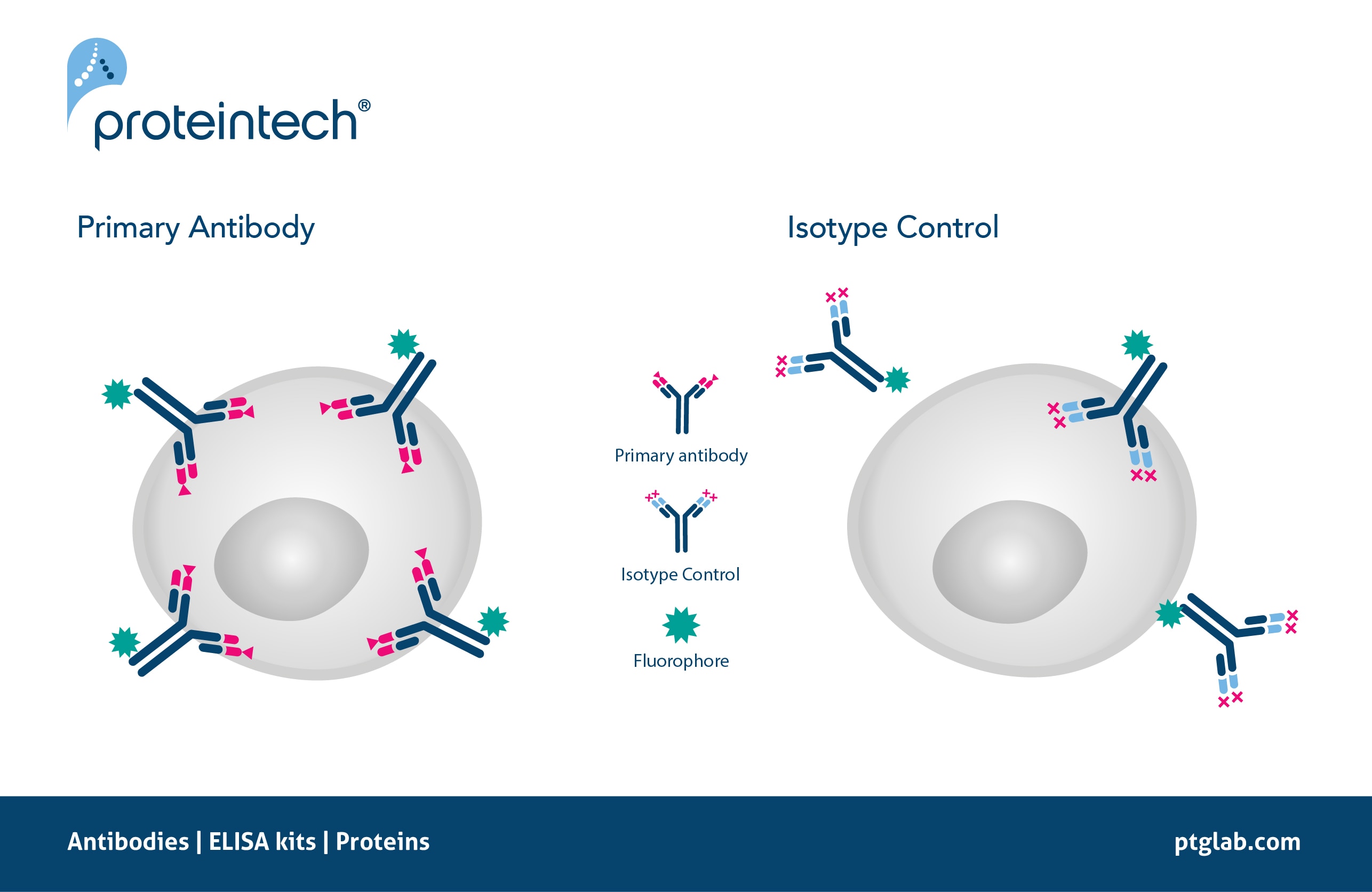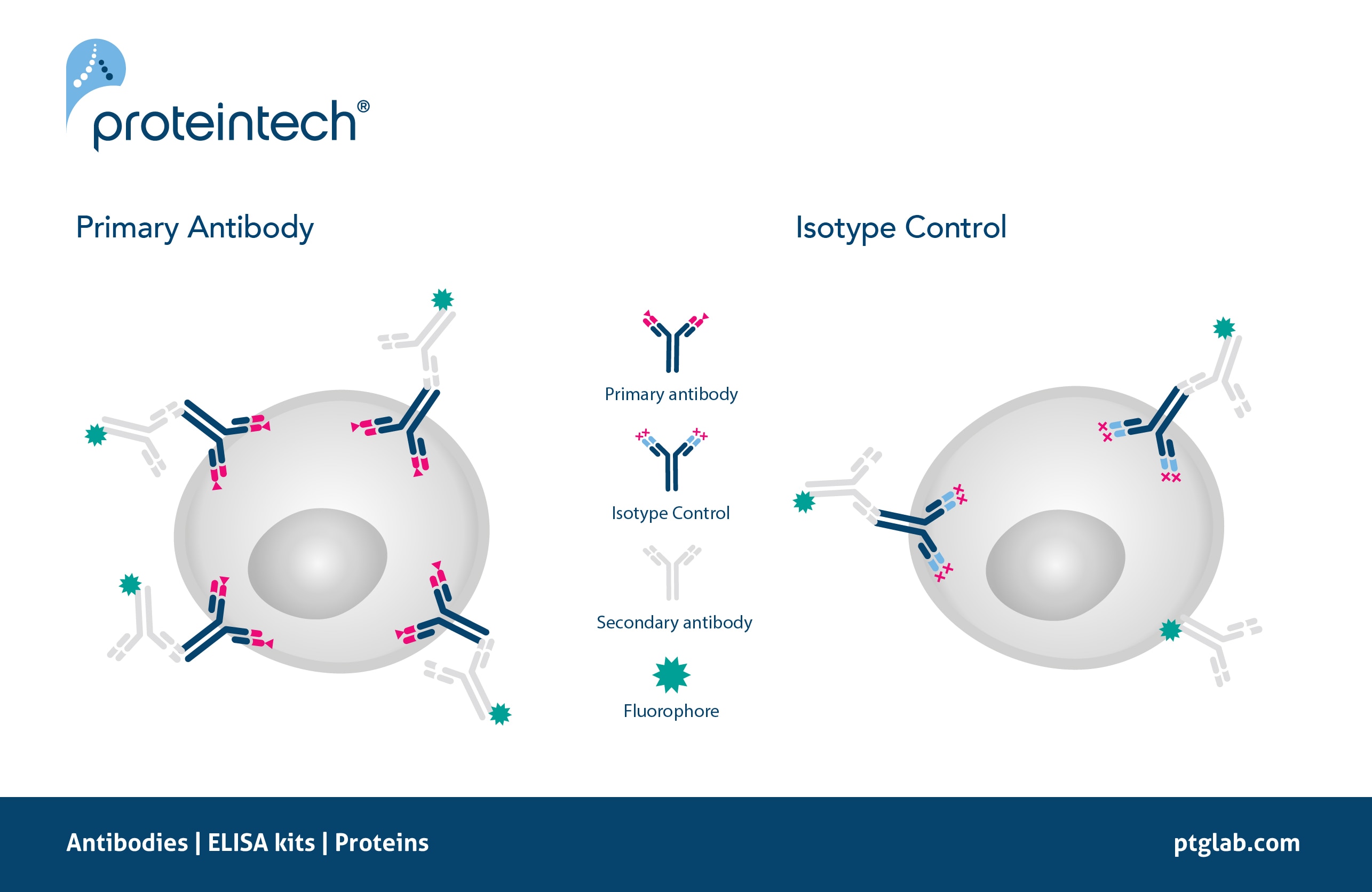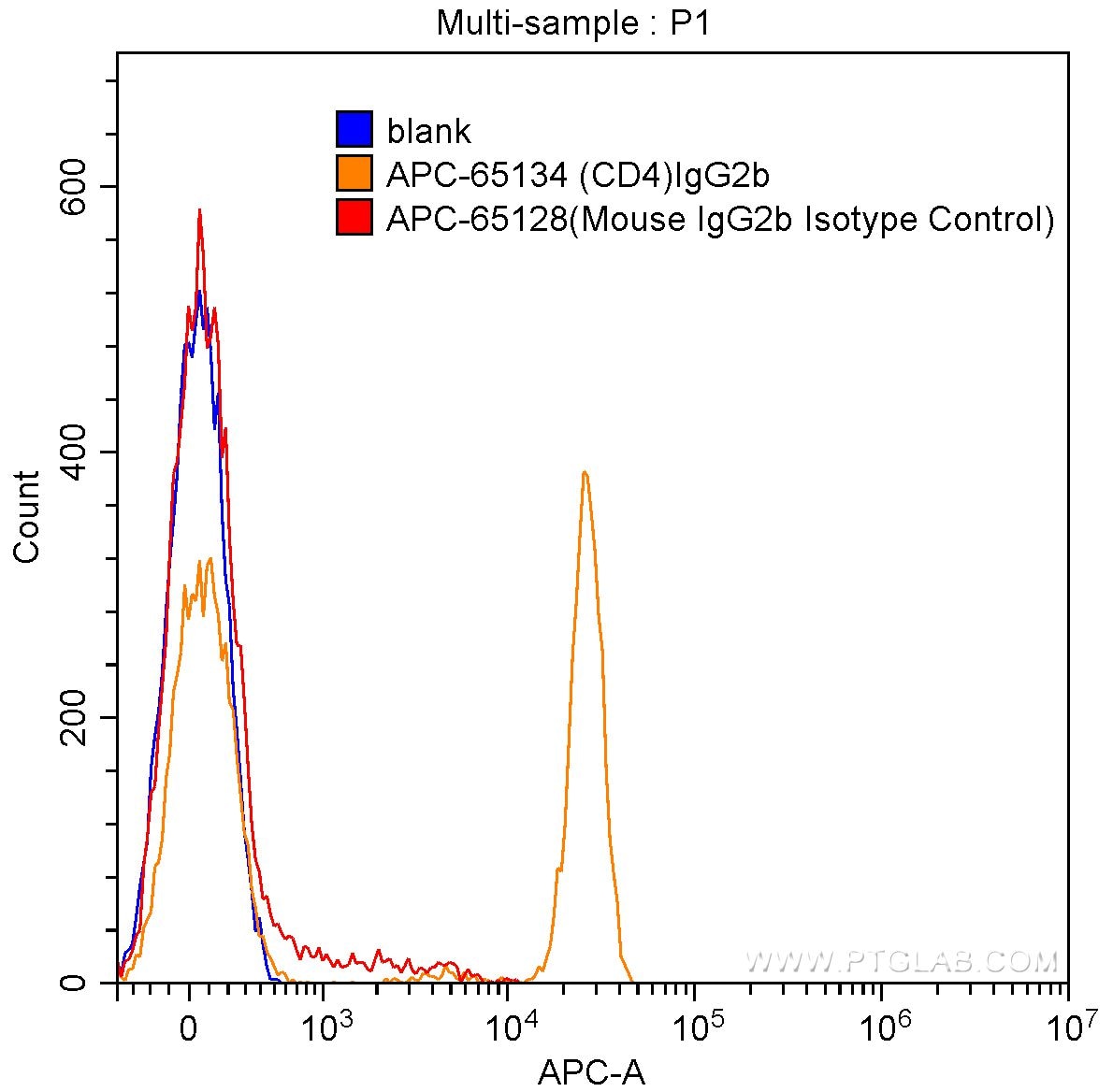Isotype Control
Antibodies bind to a specific protein or antigen, but sometimes an antibody can bind to other proteins or cellular
components in a non-specific manner. Experimental controls are critical in determining if the antibodies used in your experiment
have any off-target binding capabilities.
Off-target or non-specific binding by antibodies lead to false positive results, making it difficult to determine
background staining from antigen-specific staining. Therefore, it is important to always include experimental controls to ensure reliable results.
What is an isotype control?
An isotype control is an antibody that is used as a negative control in antibody staining applications.
Isotype control antibodies have the same immunoglobulin class and subclass as the primary antibody being used in the experiment but lack specificity to the protein of interest.

Why use an isotype control?
Isotype controls allow you to distinguish between specific antibody staining and background staining in your experiments. Antibodies (and sometimes their conjugates) can non-specifically bind to other proteins, endogenous enzymes, lipids, and Fc receptors. Including an isotype control as a negative control in your experiment also allows you to determine whether the blocking and/or washing steps in your protocol are sufficient.
How do I choose the best isotype control?
An isotype control should match certain characteristics of your primary antibody:
-
Same host species
-
Same Ig class
-
Same Ig subclass (for some species)
-
Same label as primary antibody (biotin, HRP, fluorophore, etc.)
As an example, if you are using a primary antibody that is a mouse IgG2b antibody conjugated to FITC, you would want to choose a mouse IgG2b isotype control antibody that is also conjugated to FITC.
If you are using an unconjugated primary antibody and a secondary antibody for detection, your isotype control should match your primary antibody to determine non-specific binding of the primary antibody. A secondary-only control (a sample stained with only secondary antibody; no primary antibody used) can be included as a control to determine any background staining by the secondary antibody.

Which applications use isotype controls?
Isotype controls are most commonly used in flow cytometry, immunoprecipitation and IHC, but can also be used for blocking and coating purposes in other applications such as WB, ELISA, and IF/ICC.
Protocol for isotype controls
The isotype control antibody simply replaces the primary antibody for the control samples, and the rest of the protocol is exactly the same (this eliminates any other experimental variables).
The isotype controls should be handled under the exact same conditions as the experimental samples; this includes using the isotype control antibody at the same concentration as the primary antibody.
If a secondary antibody is used, the isotype controls should be stained with the same secondary antibody.
When using isotype controls your data should look similar to the example below. Using the isotype control makes it easier to gate the positive population of CD4+ cells that are specifically stained with the Proteintech APC conjugated CD4 antibody.
Proteintech Isotype Control Products
- 48 isotype control antibodies
- Available as unconjugated, or conjugated to: APC, FITC, PE, CoraLite®488, CoraLite®594, CoraLite®647
- Available species: Mouse, Rat, Armenian Hamster
Comparison Table of Proteintech Isotype Controls by Sub-class
| Subclass | Species | Isotype Control |
|---|---|---|
| IgG | Rabbit | IgG control Polyclonal antibody |
| IgG1 | Mouse | Mouse IgG1 isotype control Monoclonal antibody |
| IgG2a | Mouse | Mouse IgG2a isotype control Monoclonal antibody |
| IgG2b | Mouse | Mouse IgG2b isotype control Monoclonal antibody |
| IgG1 | Rat | CoraLite®647 Rat IgG1 Isotype Control (HRPN) |
| IgG2a | Rat | CoraLite®647 Rat IgG2a Isotype Control (2A3) |
| IgG2b | Rat | CoraLite®647 Rat IgG2b Isotype Control (LTF-2) |
